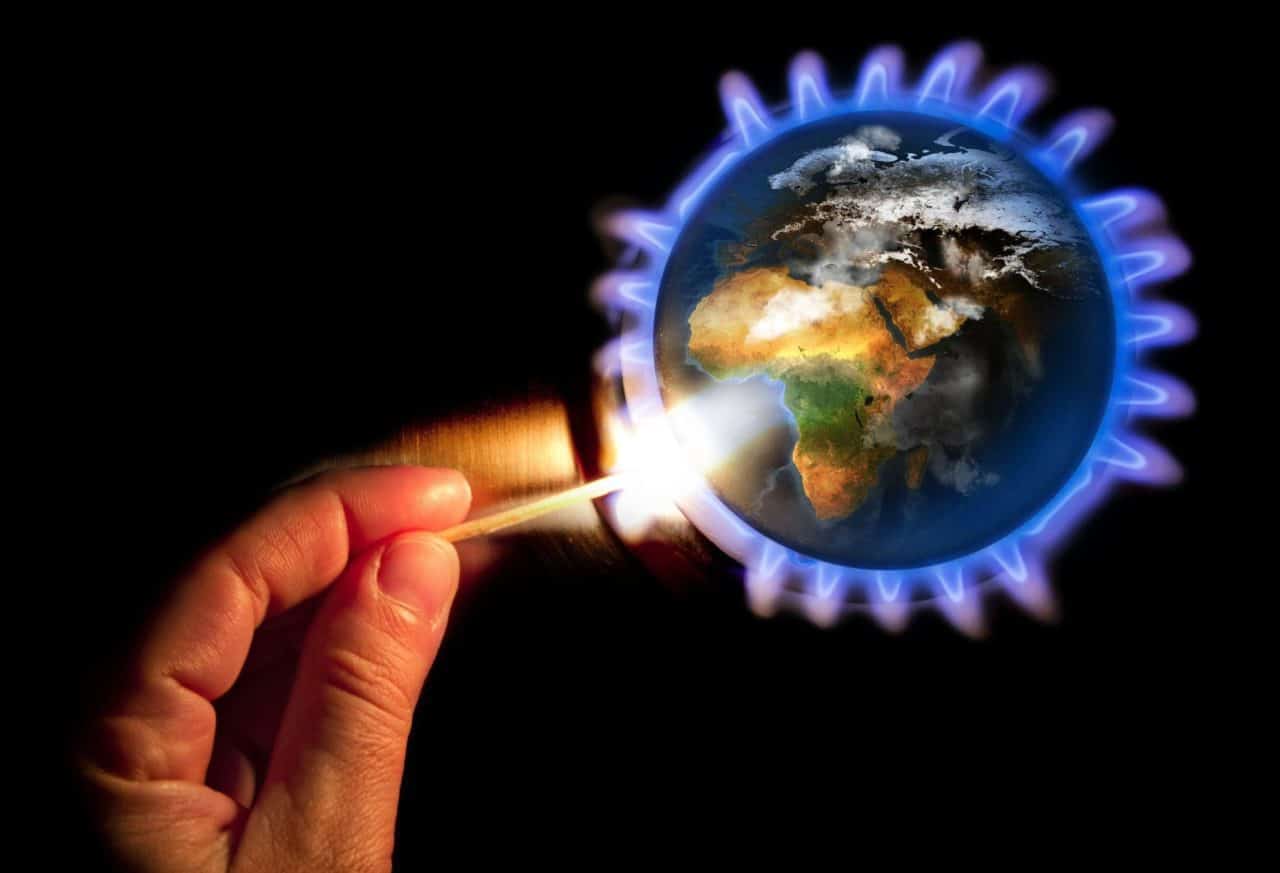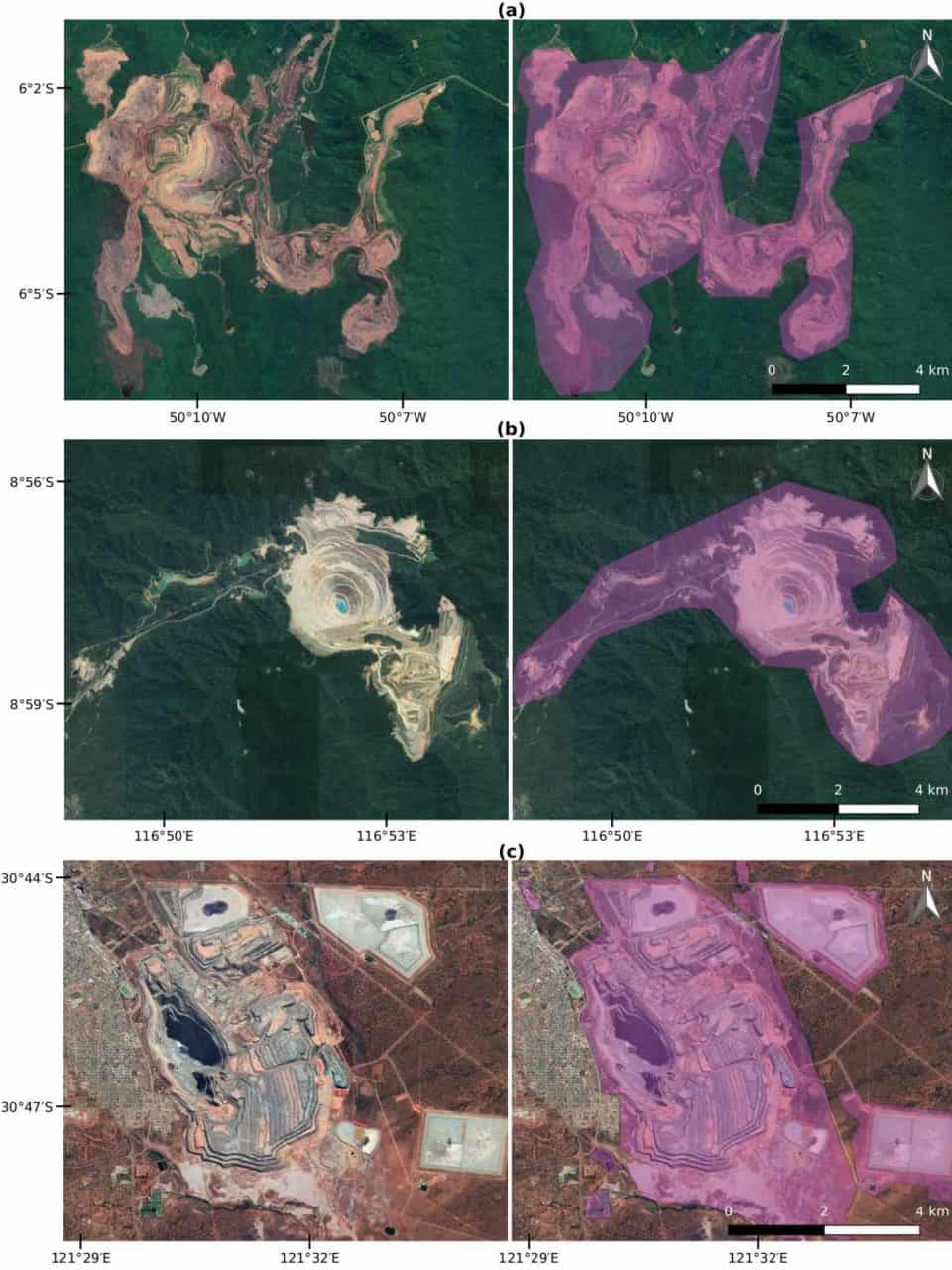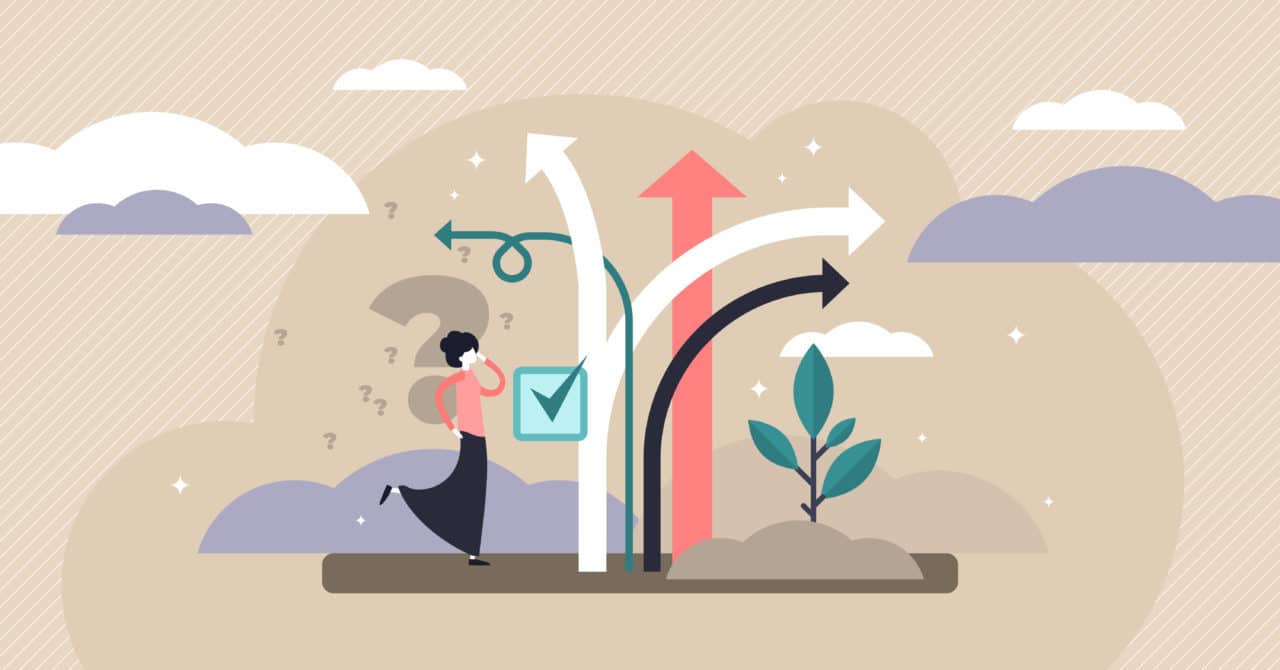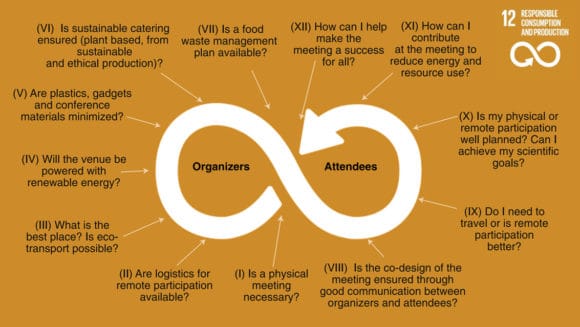Dec 16, 2021 | Alumni, Demography, Poverty & Equity, Women in Science, Young Scientists
By Fanni Daniella Szakal, 2021 IIASA Science Communication Fellow
Can we lift people out of energy poverty while simultaneously reducing carbon dioxide emissions? 2021 Young Scientists Summer Program (YSSP) participant Camille Belmin tried to tackle this seemingly contradictory issue by including fertility in the equation and estimating the conditions where an increase in energy access would reduce demand through decreasing population sizes.

© Photopassion77 | Dreamstime.com
About every third person in the world today doesn’t have access to clean cooking fuels and 1 in 10 are without electricity, predominantly in the Global South. Increasing energy access will not only improve the quality of life for many, but it will also propel us towards achieving some of the UN Sustainable Development Goals (SDGs) such as SDG3, Good Health and Wellbeing, and SDG7, Access to Clean and Affordable Energy.
The downside of increasing energy access is the surge in carbon dioxide emissions that will likely follow. Although populations with low energy access emit only a small share of global carbon emissions compared to countries in the Global North, an increase in energy provisioning would still put more pressure on the climate crisis. But, what if we could increase energy access and decrease emissions at the same time while tackling a few more SDGs in the process, such as SDG5, Gender Equality and SDG13, Climate Action?
Camille Belmin, a participant in the 2021 YSSP aimed to do just that. As a PhD Student at the Potsdam Institute for Climate Impact Research (PIK) and at the Humboldt University of Berlin, Belmin focuses on the relationship between energy access and women’s fertility. In a previous study covering 43 countries around the globe, she found evidence that higher access to electricity and modern cooking fuels was associated with women having fewer children.
“With more access to energy, instead of, for example, picking up firewood for many hours a day, women are able to spend more time on education and employment. Energy access also lowers the need for child labor and reduces child mortality through reduction of indoor air pollution and improved healthcare. This often leads to women becoming more empowered and gives them agency over their reproductive choices, leading to a fertility decline,” says Belmin.
In her YSSP project, Belmin took the energy-fertility relationship a step further: she wanted to explore if an initial boost in energy access could lead to a decline in energy demand in the long term through reduced population sizes, both increasing the quality of life and reducing carbon dioxide emissions.
“I hope that by showing that universal access to energy can also have benefits for sustainability, I can encourage investments in modern energy access in countries where basic services are lacking,” she notes.
To find out under which conditions increasing energy access will lead to a decrease in energy demand, Belmin used a microsimulation model of population projection. Under different energy access scenarios, the model follows each individual in a hypothetical population through life events, such as birth, death, and gaining access to education and electricity, while calculating their total energy consumption. She hoped to find a scenario with net savings in energy demand, in other words, a scenario where the more you give, the more you get.
Setting up the model was a new challenge for Belmin ̶ while many scientific fields have been using microsimulation for a long time, applying it to population modeling based on energy access is a novelty. The potential benefits and positive implications of the work were however well worth the difficulty.
The study focused on population simulations in Zambia, where Belmin collaborates with an NGO that aims to finance education for girls through carbon credits, building on the idea that education will lead to lower population sizes and decreased emissions in the future.
“Because of patriarchal structures, women are often bound to household chores, making the lack of energy a huge burden,” says Belmin. “This research is very important to me as a woman, or just as a human, as it seems that providing modern energy services might be a way for women to have more choice and freedom in their lives.”
Further information:
Belmin, C. (2021). Introducing the energy-fertility nexus in population projections: can universal access to modern energy lead to energy savings? IIASA YSSP Report. Laxenburg, Austria: IIASA [pure.iiasa.ac.at/17688]
Note: This article gives the views of the author, and not the position of the Nexus blog, nor of the International Institute for Applied Systems Analysis.
Nov 10, 2020 | Air Pollution, China, Climate Change, Energy & Climate, Young Scientists
By Xu Wang, IIASA Young Scientists Summer Program (YSSP) alumnus and Assistant Professor at Beijing University of Technology and Pallav Purohit, researcher in the IIASA Air Quality and Greenhouse Gases Program.
Xu Wang and Pallav Purohit write about their recent study in which they found that accelerating the transition to climate-friendly and energy-efficient air conditioning in the Chinese residential building sector could expedite building a low-carbon society in China.

© Shao-chun Wang | Dreamstime.com
China saw the fastest growth worldwide in energy demand for space cooling in buildings over the last two decades, increasing at 13% per year since 2000 and reaching nearly 400 terawatt-hours (TWh) of electricity consumption in 2017. This growth was largely driven by increasing income and growing demand for thermal comfort. As a result, space cooling accounted for more than 10% of total electricity growth in China since 2010 and around 16% of peak electricity load in 2017. That share can reach as much as 50% of peak electricity demand on extremely hot days, as seen in recent summers. Cooling-related carbon dioxide (CO2) emissions from electricity consumption consequently increased fivefold between 2000 and 2017, given the strong reliance on coal-fired power generation in China [1].
In our recent publication in the journal Environmental Science and Technology, we used a bottom-up modeling approach to predict the penetration rate of room air conditioners in the residential building sector of China at the provincial level, taking urban-rural heterogeneity into account. Our results reveal that increasing income, growing demand for thermal comfort, and warmer climatic conditions, could drive an increase in the stock of room air conditioners in China from 568 million units in 2015 to 997 million units in 2030, and 1.1 billion units in 2050. In urban China, room air conditioner ownership per 100 households is expected to increase from 114 units in 2015 to 219 units in 2030, and 225 units in 2050, with slow growth after 2040 due to the saturation of room air conditioners in the country’s urban households. Ownership of room air conditioners per 100 households in rural China could increase from 48 units in 2015 to 147 units in 2030 and 208 units in 2050 [2].
The Kigali Amendment to the Montreal Protocol on Substances that Deplete the Ozone Layer will help protect the climate by phasing down high global warming potential (GWP) hydrofluorocarbons (HFCs), which are commonly used as refrigerants in cooling technologies [3]. Promoting energy efficiency of cooling technologies together with HFC phase-down under the amendment can significantly increase those climate co-benefits. It is in this context that we assessed the co-benefits associated with enhanced energy efficiency improvement of room air conditioners (e.g., using efficient compressors, heat exchangers, valves, etc.) and the adoption of low-GWP refrigerants in air conditioning systems. The annual electricity saving from switching to more efficient room air conditioners using low-GWP refrigerants is estimated at almost 1000 TWh in 2050 when taking account of the full technical energy efficiency potential. This is equivalent to approximately 4% of the expected total energy consumption in the Chinese building sector in 2050, or the avoidance of 284 new coal-fired power plants of 500 MW each.
Our results indicate that the cumulative greenhouse gas mitigation associated with both the electricity savings and the substitution of high-GWP refrigerants makes up 2.6% of total business-as-usual CO2 equivalent emissions in China over the period 2020 to 2050. Therefore, the transition towards the uptake of low-GWP refrigerants is as vital as the energy efficiency improvement of new room air conditioners, which can help and accelerate the ultimate objective of building a low-carbon society in China. The findings further show that reduced electricity consumption could mean lower air pollution emissions in the power sector, estimated at about 8.8% for sulfur dioxide (SO2), 9.4% for nitrogen oxides (NOx), and 9% for fine particulate matter (PM2.5) emissions by 2050 compared with a pre-Kigali baseline.
China can deliver significant energy savings and associated reductions in greenhouse gas and air pollution emissions in the building sector by developing and implementing a comprehensive national policy framework, including legislation and regulation, information programs, and incentives for industry. Energy efficiency and refrigerant standards for room air conditioning systems should be an integral part of such a framework. Training and awareness raising can also ensure proper installation, operation, and maintenance of air conditioning equipment and systems, and mandatory good practice with leakage control of the refrigerant during the use and end-of-life recovery. Improved data collection, research, and cooperation with manufacturers can equally help to identify emerging trends, technology needs, and energy efficiency opportunities that enable sustainable cooling.
References:
[1] IEA (2019). The Future of Cooling in China: Delivering on Action Plans for Sustainable Air Conditioning, International Energy agency (IEA), Paris.
[2] Wang X, Purohit P, Höglund Isaksson L, Zhang S, Fang H (2020). Co-benefits of energy-efficient air conditioners in the residential building sector of China, Environmental Science & Technology, 54 (20): 13217–13227 [pure.iiasa.ac.at/16823]
[3] Purohit P, Höglund-Isaksson L, Dulac J, Shah N, Wei M, Rafaj P, Schöpp W (2020). Electricity savings and greenhouse gas emission reductions from global phase-down of hydrofluorocarbons, Atmospheric Chemistry and Physics, 20 (19): 11305-11327 [pure.iiasa.ac.at/16768]
Note: This article gives the views of the author, and not the position of the Nexus blog, nor of the International Institute for Applied Systems Analysis (IIASA).
Sep 23, 2020 | Alumni, Data and Methods, Environment, IIASA Network
By Victor Maus, alumnus of the IIASA Ecosystems Services and Management Program and researcher at the Vienna University of Economics and Business
The mining of coal, metals, and other minerals causes loss of natural habitats across the entire globe. However, available data is insufficient to measure the extent of these impacts. IIASA alumnus Victor Maus and his colleagues mapped more than 57,000 km² of mining areas over the whole world using satellite images.

© Pix569 | Dreamstime.com
Our modern lifestyles and consumption patterns cause environmental and social impacts geographically displaced in production sites thousands of kilometres away from where the raw materials are extracted. Complex supply chains connecting mineral mining regions to consumers often obscure these impacts. Our team at the Vienna University of Economics and Business is investigating these connections and associated impacts on a global-scale www.fineprint.global.
However, some mining impacts are not well documented across the globe, for example, where and how much area is used to extract metals, coal, and other essential minerals are unknown. This information is necessary to assess the environmental implications, such as forest and biodiversity loss associated with mining activities. To cover this data gap, we analyzed the satellite images of more than 6,000 known mining regions all around the world.
Visually identifying such a large number of mines in these images is not an easy task. Imagine you are flying and watching from the window of a plane, how many objects on the Earth’s surface can you identify and how fast? Using satellite images, we searched and mapped mines over the whole globe. It was a very time-consuming and exhausting task, but we also learned a lot about what is happening on the ground. Besides, it was very interesting to virtually visit a vast range of mining places across the globe and realize the large variety of ecosystems that are affected by our increasing demand for nature’s resources.
The result of our adventure is a global data set covering more than 21,000 mapped areas adding up to around 57,000 km² (that is about the size of Croatia or Togo). These mapped areas cover open cuts, tailings dams, piles of rocks, buildings, and other infrastructures related to the mining activities — some of them extending to almost 10 km (see figure below). We also learned that around 50 % of the mapped mining area is concentrated in only five countries, China, Australia, the United States, Russia, and Chile.

Examples of mines viewed from Google Satellite images. (a) Caraj\'{a}s iron ore mine in Brazil, (b) Batu Hijau copper-gold mine in Indonesia, and (c) Super Pit gold mine in Australia. In purple is the data collected for these mines (Figure source: www.nature.com/articles/s41597-020-00624-w).
Using these data, we can improve the calculation of environmental indicators of global mineral extraction and thus support the development of less harmful ways to extract natural resources. Further, linking these impacts to supply chains can help to answer questions related to our consumption of goods. For example, which impacts the extraction of minerals used in our smartphones cases and where on the planet they occur? We hope that many others will use the mining areas data for their own research and applications. Therefore, the data is fully open to everyone. You can explore the global mining areas using our visualization tool at www.fineprint.global/viewer or you can download the full data set from doi.pangaea.de/10.1594/PANGAEA.910894. The complete description of the data and methods is in our paper available from www.nature.com/articles/s41597-020-00624-w.
This blog post first appeared on the Springer Nature “Behind the paper” website. Read the original post here.
Note: This article gives the views of the authors, and not the position of the Nexus blog, nor of the International Institute for Applied Systems Analysis.
Jun 22, 2020 | Alumni
by Ralph L. Keeney, IIASA alumnus and Professor Emeritus at Duke University
Ralph L. Keeney is a professor and consultant about decision-making. He was a research scholar at IIASA from 1974-76, where he and Howard Raiffa finished their book Decisions with Multiple Objectives. Here he describes his most recent book, Give Yourself a Nudge: Helping Smart People Make Smarter Personal and Business Decisions, and how it can impact you.

© VectorMine | Dreamstime
Few individuals understand the key role of decisions in one’s life. That is because many things other than decisions can increase the quality of your life. If you improve your professional skills, including your decision-making skills, you will get more job opportunities and end up doing more interesting work with better pay. If you regularly exercise and eat a better diet, your fitness and health will improve. Of course this is true, but none of this could happen without initially making decisions to improve professional skills, to exercise regularly, or to eat a better diet, and then making the routine decisions to follow through to turn your plans into reality. That’s why making decisions is the tool for improving your life. The rest of your life just happens beyond your control.
We all learned to make decisions by trial and error as very few individuals have had any education or training about how to make good decisions. Hence, we each have our own decision-making style composed of habits. Over the last four decades, researchers and scientists in the fields of behavioral economics and psychology have identified numerous biases and shortcomings of the habits used by all decision-makers. A concise summary of these findings is that decisions are often not adequately understood when a choice is made, and the choice of an alternative strongly depends on how the alternatives are presented rather than on their potential impacts.

© Ralph Keeney
My new book, Give Yourself a Nudge presents numerous ways for you to limit the influence of the biases and shortcomings of your natural decision-making habits. It describes and illustrates several different types of personal nudges that guide you to make smarter decisions. These nudges help you clearly define the decision that you face, thoroughly articulate what you want to achieve by making that decision, create better alternatives to consider, and deliberately identify more desirable decisions to face. Personal nudges are applicable to all of your decisions.
My favorite personal nudge concept is called a decision opportunity. To understand this important concept, ask yourself “Who should be making your decisions?” Obviously, you should. So who should be making the decisions about which decisions you should face? This is a more challenging question. My response is that you should be making more of them than you currently are.
You do not choose the decision problems that occur due to the actions of others and circumstances beyond your control, and you must reactively address these decisions. However, you can proactively identify any specific decision that you want to face. I refer to these decisions as decision opportunities.
Pursuing a decision opportunity usually improves your life, whereas solving a decision problem rarely can improve your life. Let me explain. Most decision problems result from something that becomes worse in your life: you become sick, your car is damaged, or you lose your job. Solving such a decision attempts to restore your quality of life to its level before the decision problem occurred. When you create a decision opportunity, nothing in your life becomes worse. Pursuing a decision opportunity should improve circumstances which raises your quality of life.
To create a decision opportunity, all that you initially need to do is think about something you would really like to have or experience for yourself or others. You then define the decision opportunity as ’decide how to make that desired future a reality’. There are no limits to thoughts, so anything you envision can be the basis for a decision opportunity. After you define a decision opportunity, then address it in the same way that you do for a decision problem. Specifically, clarify all of your objectives for that decision opportunity, next create a set of potential alternatives to achieve them, and then select the alternative that best achieves your objectives.
The only reason to make any decision is to achieve something. That something is made clear by identifying the objectives for the decision, which should then guide all effort on that decision. Fully identifying all the objectives for an important policy decision is difficult and often not done. At IIASA, I developed techniques to help stakeholders articulate their objectives, which stimulates the creation of a richer set of alternatives and provides a basis for a more impactful analysis of those alternatives. Fully identifying all of the objectives for any IIASA project today is just as critical as it was in the past.
Note: This article gives the views of the author, and not the position of the Nexus blog, nor of the International Institute for Applied Systems Analysis.
May 14, 2020 | Alumni, Postdoc, Sustainable Development, Women in Science
By Raquel Guimaraes, postdoc in the IIASA World Population Program, and Debbora Leip, an alumnus of the IIASA Advanced Systems Analysis Program
IIASA researcher Raquel Guimaraes and former research assistant Debbora Leip encourage the support of the Cercedilla Manifesto, arguing that it is high time for the scientific community to take responsibility and set an example by making research meetings more sustainable.

© La Fabrika Pixel S.l. | Dreamstime.com
The research community widely agrees that strong action is needed to counteract the climate crisis that is currently taking place. Nevertheless, scientists regularly meet at conferences that are often far from sustainable. Problems range from participants flying to attend events, to unnecessary gadgets and gifts handed out at the meetings, and unsustainable catering at conference dinners. In light of the current public debate on environmental and social sustainability, we call on scientists to take a leading role in changing their work practices towards more sustainable habits, starting with research meetings.
In April 2020, Alberto Sanz-Cobena and several colleagues published an article titled Research meetings must be more sustainable in Nature Foods. They presented the Cercedilla Manifesto with 12 sustainability decisions as guidelines for organizers and attendees of research meetings (see Figure 1). The starting point of the manifesto is to question whether a physical meeting is indeed necessary. If organizers decide that it is, there is still the question of whether each single attendee really needs to physically join the conference. Often, remote participation can be equally efficient if a technical solution is provided by the organizers. Furthermore, if a decision to conduct a physical meeting is taken, organizers have to consider what food will be served.
The authors state that excessive amounts of food and food waste are very common at meetings, which makes a change of mindset towards better food management very important, not only for climate change, but for many other environmental threats. In our opinion, this point has so far been neglected in public debate.
Given the urgency for climate change action and the need for individuals to play an active role – with research scientists taking the lead – we assert that it is urgent to start changing our habits and setting an example regarding environmental and social sustainability in research meetings. Indeed, many of us take it for granted that to meet and discuss our work, we must travel. Most attendees do not even question that unnecessary gadgets and gifts are distributed or that opulent dinners are provided.
We hope that the Cercedilla Manifesto will raise awareness about the fact that good scientific output often does not require a physical meeting by providing a conceptual framework for change in this regard. If we support the manifesto, we stand a chance to lower the barrier to dare deviating from currently applied practices. The 12-sustainability decisions were designed by specialists to serve as a reference for anybody who wishes to organize/attend a sustainable meeting.
In the current situation brought about by the global COVID-19 crisis, almost everybody has experienced that remote conferences are not only possible, but also efficient – sometimes even more so than a physical meeting would have been. First, it saves time in terms of travel. Second, it may be more inclusive by allowing people to attend, who would not have had the opportunity to join otherwise, be it for financial, family, or other reasons. In addition, remote meetings provide additional features, like a chat function that could add another discussion layer.
Of course, remote meetings also have their limitations: informal in-person meetings during coffee breaks, for example, can enhance networking and free discussions, and sometimes contribute significantly to a meeting’s outcome. Virtual meetings also face several other challenges, such as participation by attendees from different time zones, or poor internet connections. These issues could however easily be addressed by spreading the meeting over more days, in such a way that the need for attendance outside of acceptable time slots is minimized, and by investing saved traveling costs into better equipment.
Let us learn from this experience and not go ‘back to normal’ after the COVID-19 crisis. We should take this as an opportunity to speed up change and tackle the other global crisis of climate change!
You can find the petition at openpetition.eu/!cercedillamanifesto. We encourage you to share and support this initiative.
References:
Sanz-Cobena A, Alessandrini R, Bodirsky BL, Springmann M, Aguilera E, Amon B, Bartolini F, Geupel M, et al. (2020). Research meetings must be more sustainable. Nature Food 1, 187–189. DOI: 10.1038/s43016-020-0065-2
Frisch B, & Greene C (2020). What it takes to run a great virtual meeting. Harvard Business Review. https://hbr.org/2020/03/what-it-takes-to-run-a-great-virtual-meeting?ab=hero-subleft-3
Note: This article gives the views of the author, and not the position of the Nexus blog, nor of the International Institute for Applied Systems Analysis.









You must be logged in to post a comment.